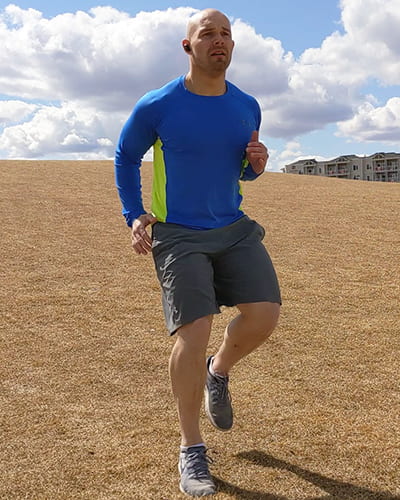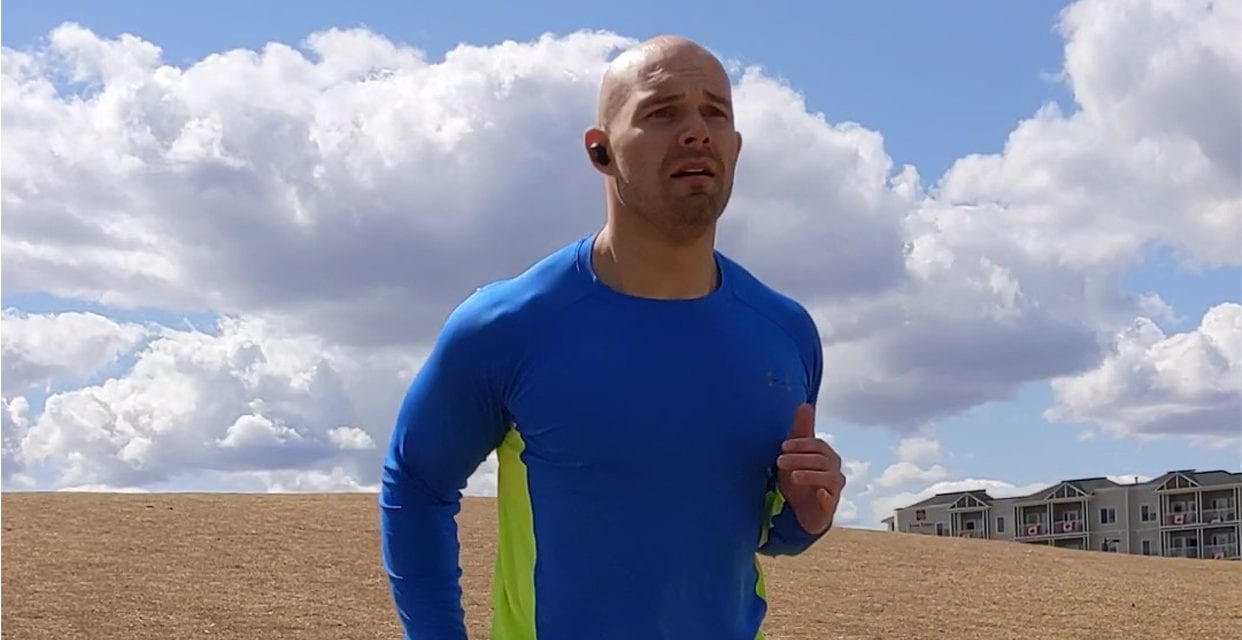As the days of social distancing continue, the same few walls begin to feel like they are closing in around us. Running is a great excuse to get out of the house while still  maintaining our social distance and being active.
maintaining our social distance and being active.
Not only does running get you out of the house, but it also costs no money and helps to improve our cardiovascular health and manage stress, which is especially important during these times. If you’re anything like myself, you may find that you can run for longer distances every now and again, but doing it on a regular basis can get a bit boring, so how can we change things up a bit while still getting outside?
Changing Your Route
This may seem obvious to some people, but we are creatures of habit and may find that we keep running the same two or three routes repeatedly. During your long runs try different routes around your place or explore some of the city trails. Changing up your trails just may be the thing you need to reinvigorate your run routine. To progress either change up your route or increase your distance.
Landmark Sprints
These are easy to do, assuming your area has trees, lamp posts, or something consistent alongside your running route. Start with a light warm-up for five or so minutes to make sure your joints and muscles are warm. Run at an easy pace from your first landmark to the second, when you get to your second landmark sprint as fast as you can until you hit the third landmark, slow down to a walk until you hit your fourth landmark and repeat your run/ sprint/walk’s for two to five times either finish it up here or take a nice long five to 10-minute break and try for a second set of 2 x 5 sprints. To progress your landmark sprints, work your way up to 3 x 5 sprints by adding a sprint to each set every week. Start at 2 x 5 then move to 3 x 3 and progress up to 3 x 5. Once you’ve achieved 3 x 5 sets test your new run tolerance by setting a cutoff time and see how many repeated sprints you can do with a set rest period before you are unable to hit your prescribed cutoff time.
Hill Runs
When doing your hill running you want the hill to feel like a challenge to run up but not feel like you must walk up the hill just to complete the first round. After you have found your hill and have warmed up you have two choices and they both give you different benefits.
Uphill Running: Start at the bottom of the hill and sprint up the hill as fast as you can, when you get to the top of the hill stop and walk back down. This will help you to strengthen your legs and help you to develop more power, which is especially useful for those into trail running.
Downhill Running: Start at the top of the hill and run down, please be careful if you haven’t done this before as you can get more momentum then you would expect. Then walk back up the hill and repeat. This is great for those that want to get faster, it allows us to turn our legs over faster than we would normally be able to accomplish and this transfers into faster running times.
Hill runs are a great way to help you break up the monotony of running while working on weaknesses in your running. Make sure to create a session that focuses only on a certain aspect of hill work. If you try to do both the up and downhill runs in the same session, you minimize the benefits you get from either modality and increase your risk of injury. To progress your hill running, work your way up to three sets of five reps by adding a rep to each set every week. Start at two times five then moving to three times three and progressing up to three times five sets. Focus on either downhill or uphill sprinting at a time to see significant improvements in either speed or power.
Backward Sprints
For those of you that have an open field and want another way to change your routine, you can always run backwards. A study published in the Journal of Strength and Conditioning in April 2020, looking at 13 to 15-year-old males showed running backwards helps improve sprint performance. This may give you another type of running and another tool to help get faster, especially if you participate in a sport that includes a lot of backwards running. This would be best done in 10 to 30 m backward sprints, sprinkled into your workout routines sporadically to cause different changes in the stretch-shortening cycle (the rate your tissues can rebound from being stretched) potentially increasing your ‘spring-I-ness’.
Test and Progress
One of the easiest ways to stay motivated is to see that you are improving, many individuals when they start running, just start and have no idea whether they are getting better or not. Find a route that you know well and time yourself. If you want you to put this into mapping software to see the distance, then run this same route after about four weeks of consistent training. If you have been pushing yourself in your training, you should see a significant improvement in your time, and even better than that, it should feel easier to complete.
Depending on what you’re looking for, whether it’s just an escape from the house, some regular exercise or improving performance, running can help you reach your goals.
by Kyle Babiuk
Kyle Babiuk is a Bachelor of Kinesiology Graduate and is certified with the Canadian Society for Exercise Physiologists as a Certified Exercise Physiologist Exercise. He specializes in movement analysis, chronic disease management through exercise and strength programming. He’s worked with athletes, individuals with chronic diseases, along with many other individuals trying to achieve their health and fitness goals.


